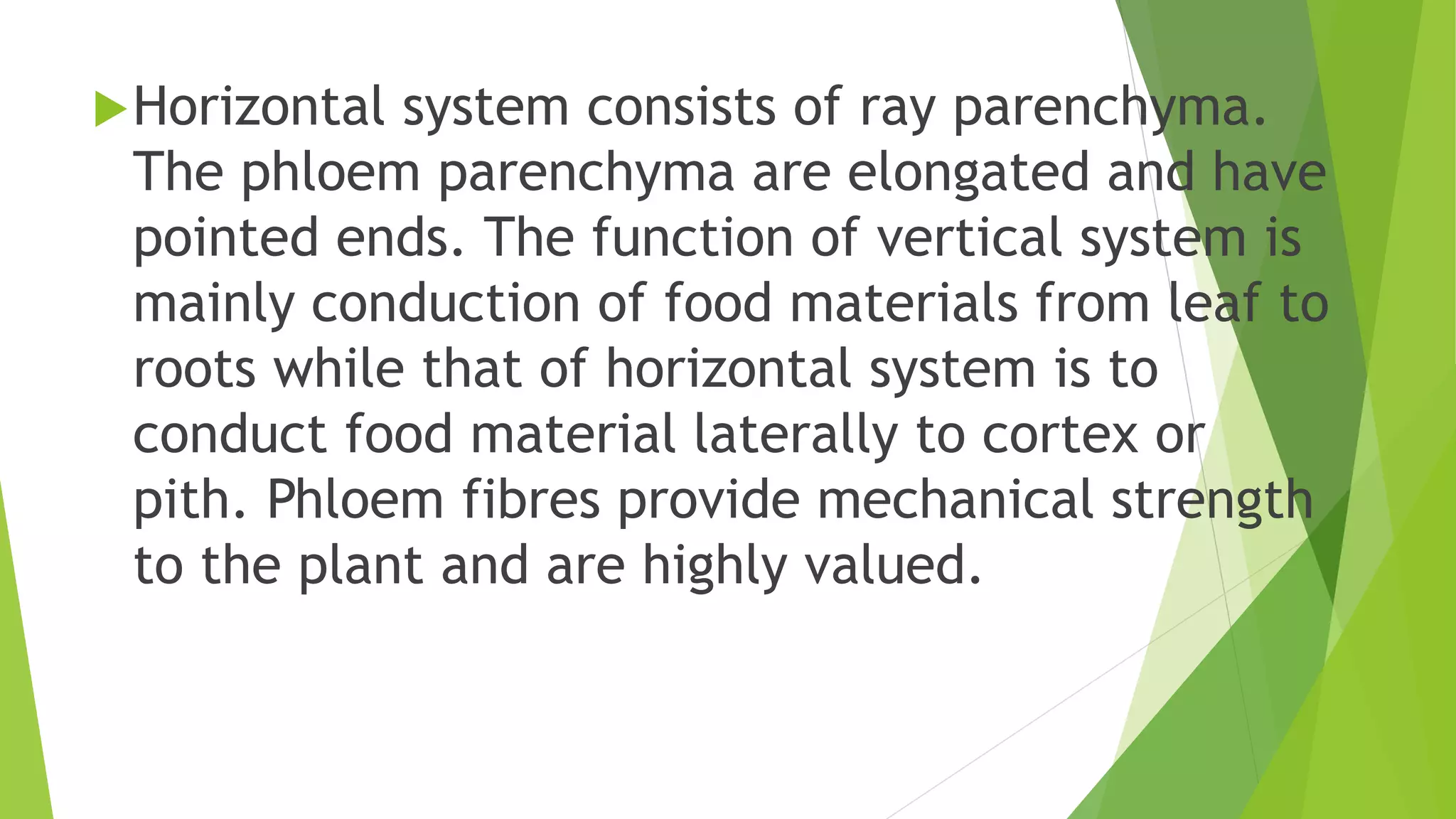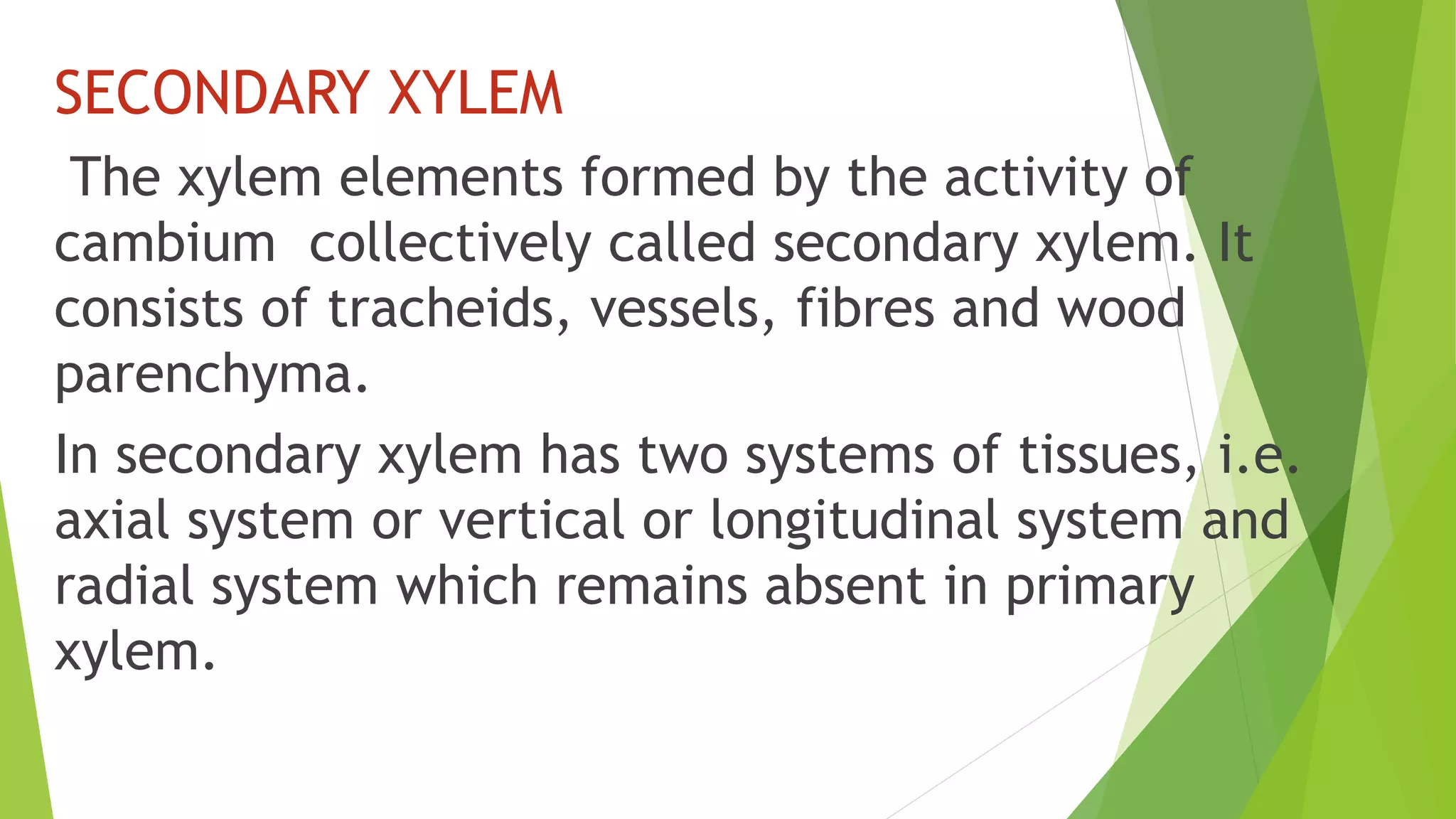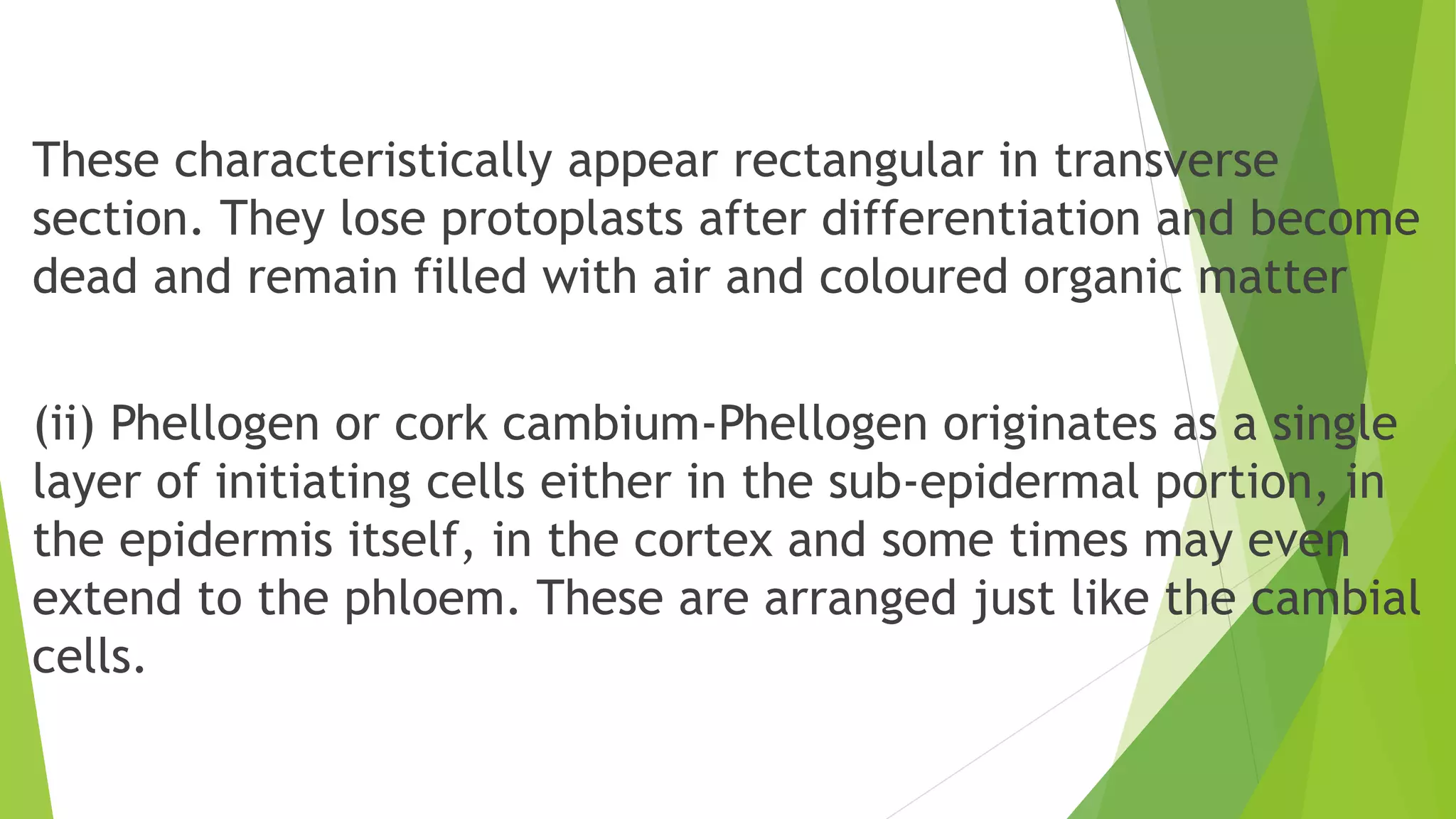Secondary growth occurs after primary growth through the activity of lateral meristems, resulting in increased girth. It is characterized by the deposition of secondary phloem and secondary xylem, which modifies the primary structure. In dicots, secondary growth includes intrastelar growth within the stele and extrastelar growth outside. Intrastelar growth involves the formation of the vascular cambium and secondary vascular tissues, while extrastelar growth involves the formation of a protective periderm layer and lenticels for gas exchange. The vascular cambium produces secondary phloem and secondary xylem tissues through the activity of ray initials and fusiform initials.

















